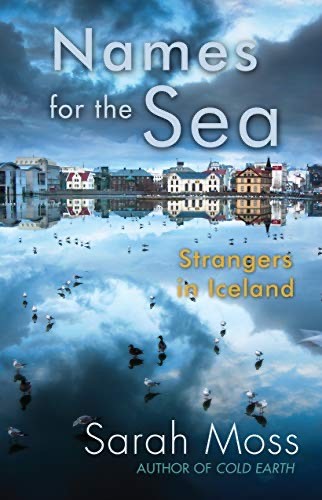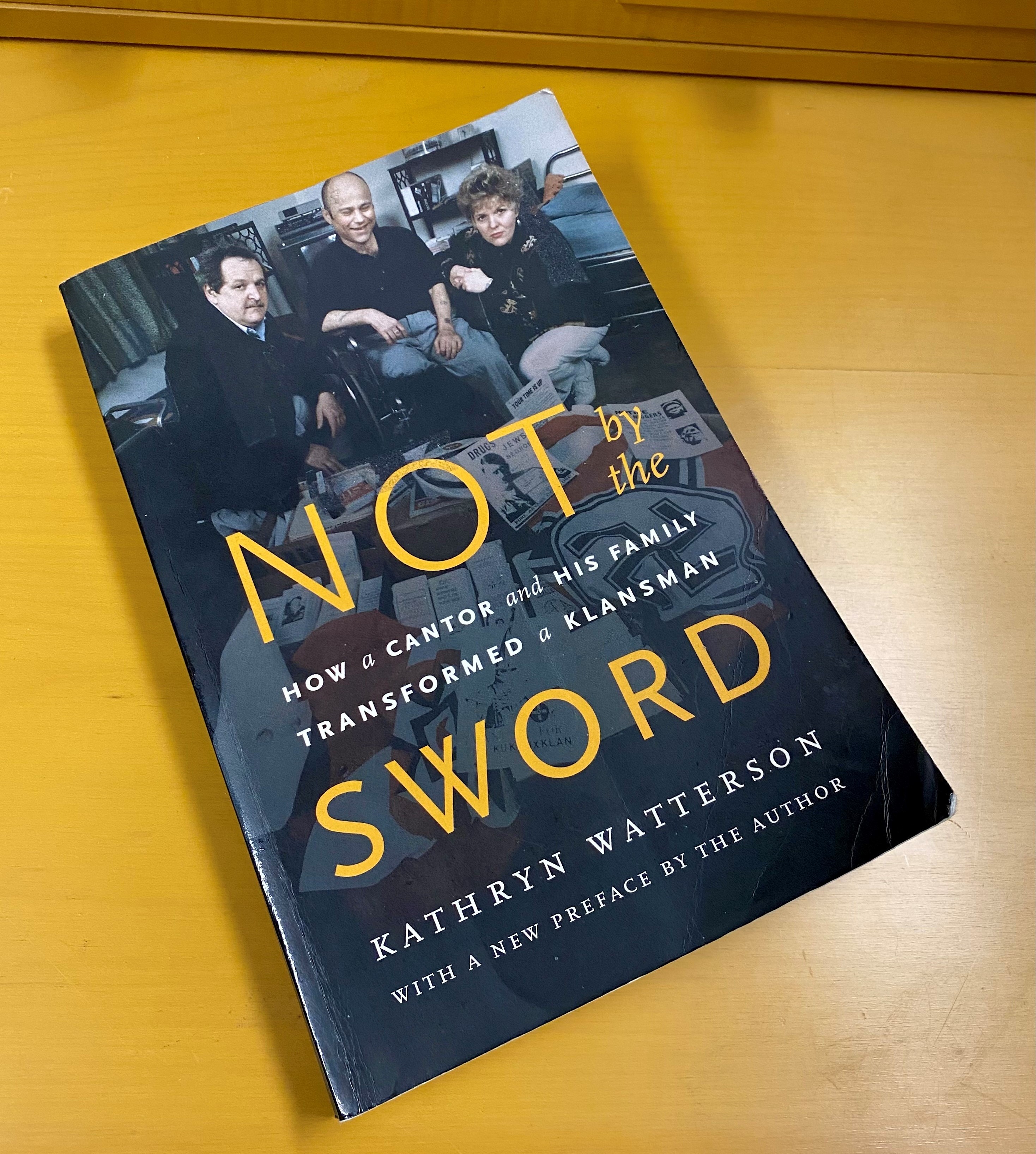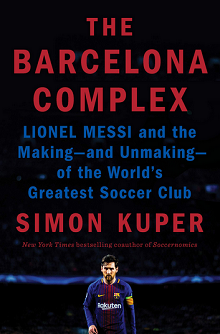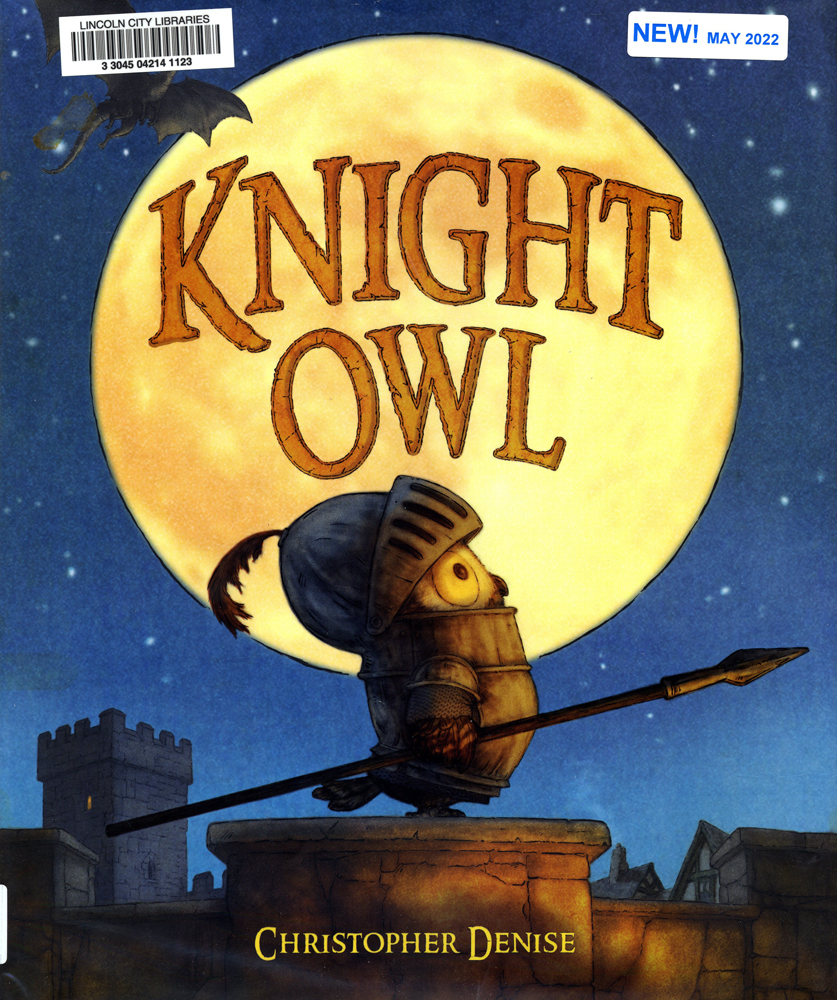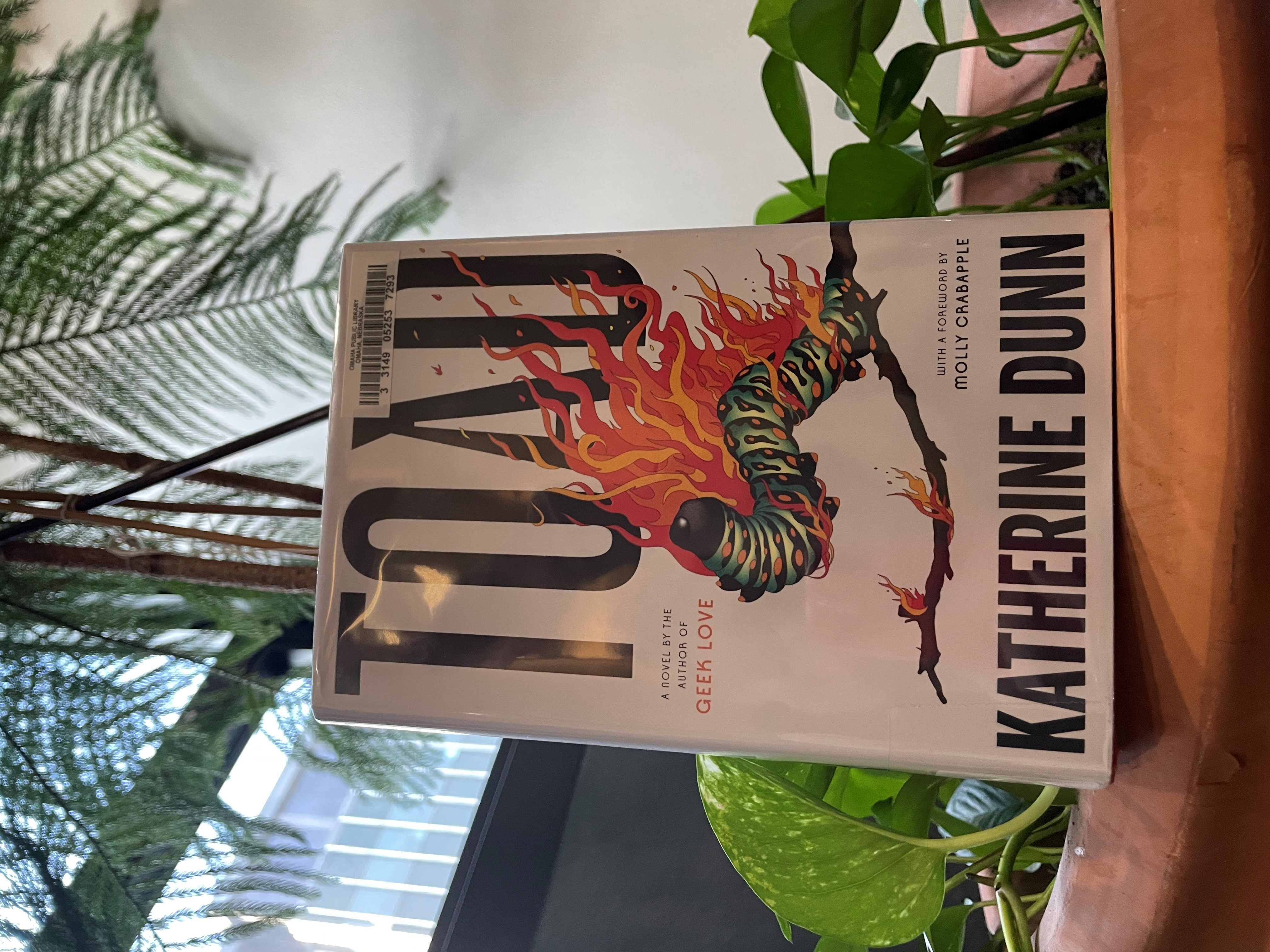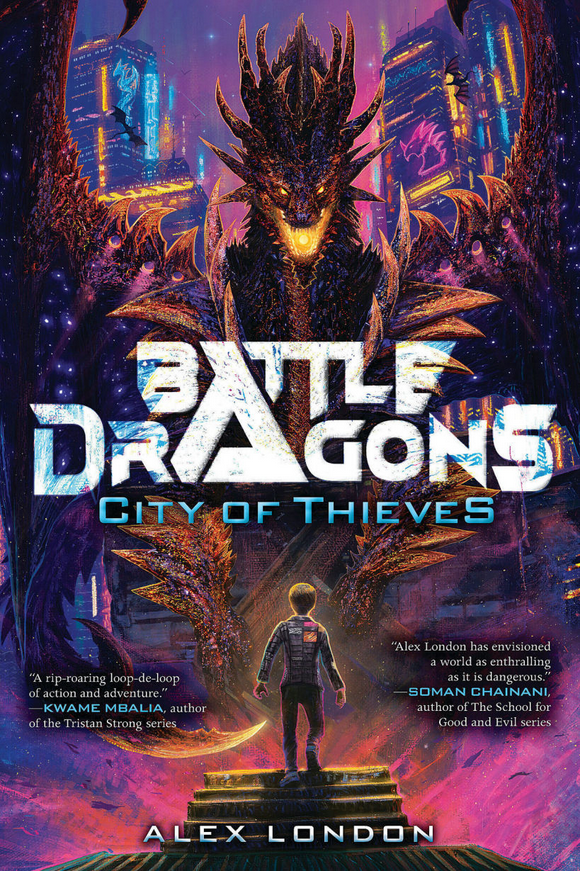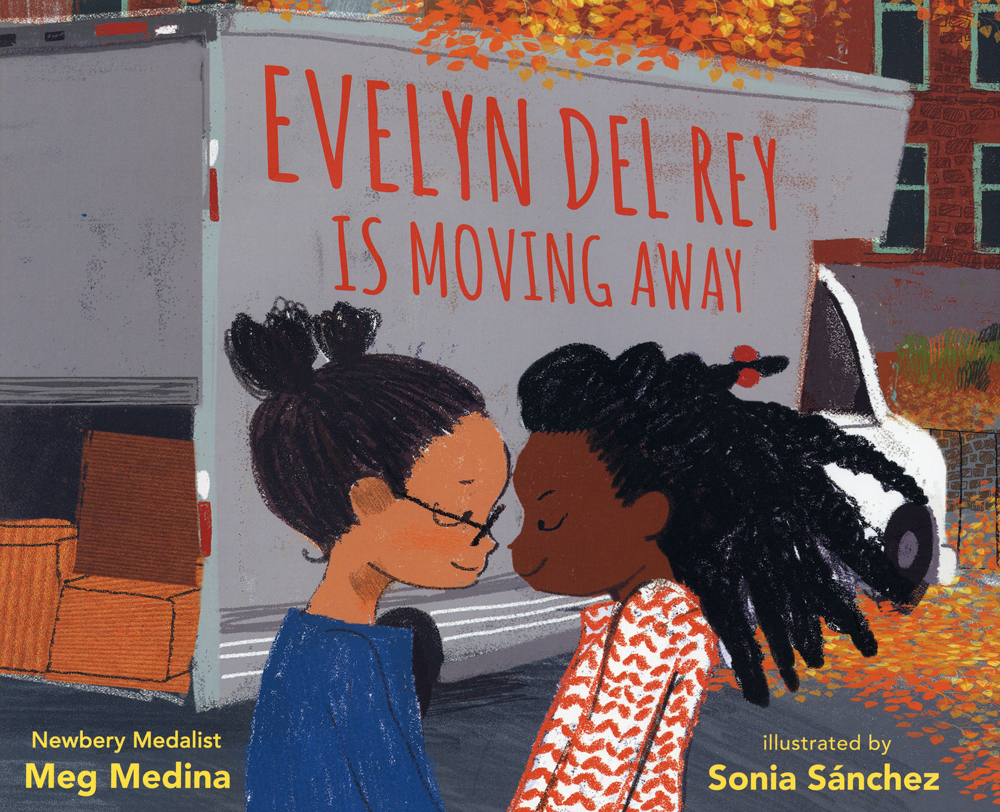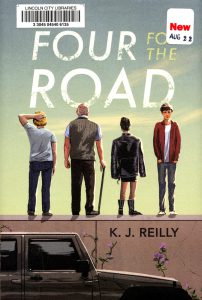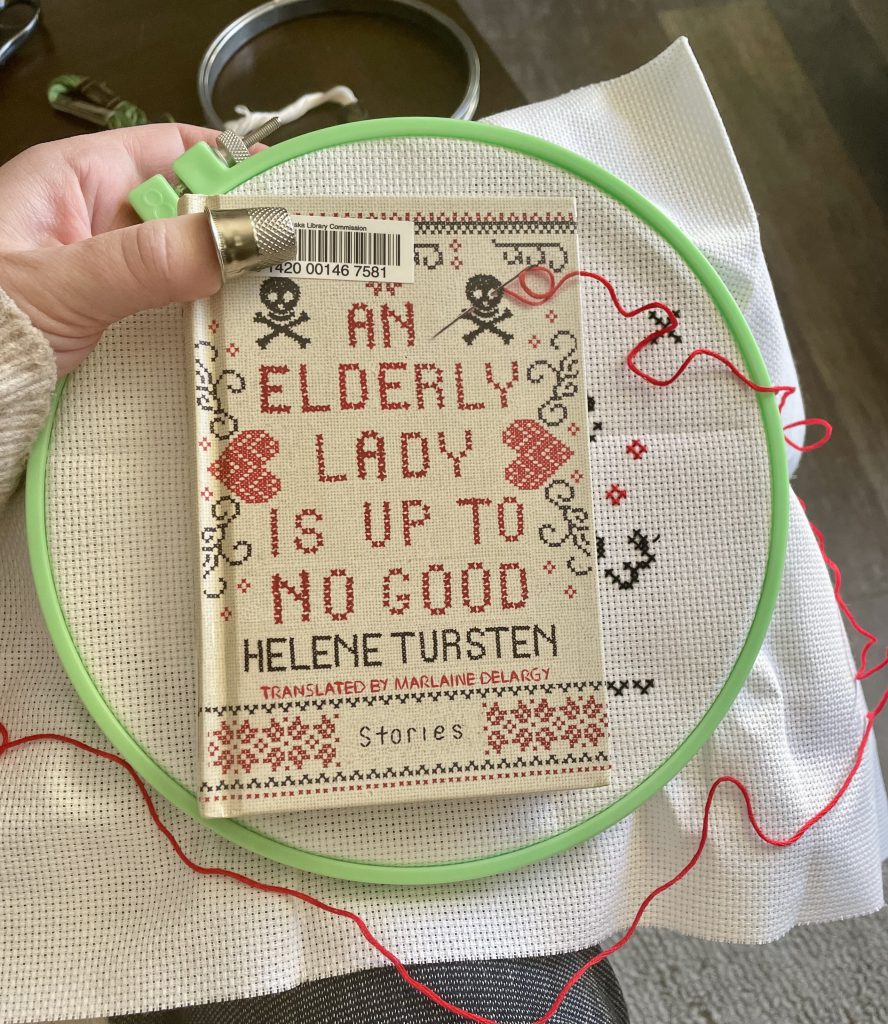Search the Blog
Categories
- Books & Reading
- Broadband Buzz
- Census
- Education & Training
- Friday Reads
- General
- Grants
- Information Resources
- Library Management
- Nebraska Center for the Book
- Nebraska Libraries on the Web
- Nebraska Memories
- Now hiring @ your library
- Preservation
- Pretty Sweet Tech
- Programming
- Public Library Boards of Trustees
- Public Relations
- Talking Book & Braille Service (TBBS)
- Technology
- Uncategorized
- What's Up Doc / Govdocs
- Youth Services
Archives
Subscribe
Category Archives: Books & Reading
#BookFaceFriday “Really Good, Actually” by Monica Heisey
There’s no crying in #BookFaceFriday!

Laugh until you cry with this week’s #BookFaceFriday. If ever there was an anti-Valentine’s Day read this one is it. If you love “Bridget Jone’s Diary,” or just belting out “All By Myself” by Celine Dion, I think you’ll enjoy the messy love life in this read. Whatever your Valentine’s Day plans, you can find your next book on Nebraska OverDrive Libraries. Like “Really Good, Actually: A Novel” by Monica Heisey (HarperCollins Publishers, 2023), it’s available as an ebook and an audiobook today.
“Heisey’s portrayal of the joys and pitfalls of online dating will ring true, and Maggie’s self-deprecating, often snarky humor keeps the deeper themes of the story from getting too heavy. It’s a thoroughly modern take on 1990s chick lit, exaggeratedly over the top in the best possible way. Readers will cheer messy Maggie on as she stumbles inelegantly toward a happy, postdivorce life.”
— Booklist
Find this title and many more through Nebraska OverDrive. Libraries participating in the Nebraska OverDrive Libraries Group currently have access to a shared and growing collection of digital downloadable audiobooks and eBooks. 189 libraries across the state share the Nebraska OverDrive collection of 26,554 audiobooks, 32,935 eBooks, and 3,940 magazines. As an added bonus it includes 130 podcasts that are always available with simultaneous use (SU), as well as SU ebooks and audiobook titles that publishers have made available for a limited time. If you’re a part of it, let your users know about this great title, and if you’re not a member yet, find more information about participating in Nebraska Overdrive Libraries!
Love this #BookFace & reading? Check out our past #BookFaceFriday photos on the Nebraska Library Commission’s Facebook page!
Posted in Books & Reading
Tagged bookfacefriday, Ebook, Fiction, Monica Heisey, Nebraska OverDrive Libraries, Novel, OverDrive, Reading, Really Good Actually
Leave a comment
Friday Reads: Names for the Sea: Strangers in Iceland by Sarah Moss
When the days are short and it’s too cold to spend much time outdoors, what kind of books do you reach for? I often seek out a travel memoir. Those I connect with most inspire me to reminisce about my own travel or pique my interest in learning more about a place I’ve never been. When looking for a new read to get me through the cold and dreary season, Names for the Sea: Strangers in Iceland jumped out at me. Several people have recently told me about their travels to Iceland and suggested I add it to my ultimate travel wish list, so I decided to download the e-book and learn more.
Names for the Sea isn’t exactly a travel memoir. It is the story of a British family living and working in Reykjavik during 2009-2010, and the stories of Icelanders met during their stay. Author Sarah Moss, is a British novelist and professor of literature who dreamed of living and working in a foreign country. A temporary position at the University of Iceland caught her eye. After she accepted the position, Sarah and her family put most of their possessions into storage and moved to Reykjavik. Sarah’s husband and two young children joined her on the adventure. The first chapters of the book revolved around arranging schooling for the children and various issues pertaining to parenting, settling into a new teaching job, and setting up a home in an unfamiliar place. The book is not just a memoir of their daily life. It is also peppered with stories of various Icelanders who provide a fascinating window into Icelandic history and culture. The Moss family stories and Icelandic narratives don’t always fit together seamlessly, and Sarah’s negativity is a bit tiresome at times. The book’s strengths are the Icelanders’ stories and the Moss family’s sporadic interactions with the land and environment.
“The aurora are unsettling partly because they show the depth of the space, and falsity of our illusion that the sky is two-dimensional, and partly because it’s hard to convince your instinct that something bigger than you and grabbing at the sky isn’t out to get you.”
Sarah had a difficult time settling into Icelandic life. She seemed crippled by various fears including the worry that everyone saw her as a “foreigner,” and that she didn’t fit in. Her fears limited her activities in Iceland, and seemed to impact some of her perceptions. Nevertheless, she had a lot of curiosity about Icelandic history and culture. Her colleagues helped her set up meetings with various people to learn about topics that included elves and ghosts, farm life, culinary history, poverty, politics, Icelandic knitting, and volcanic eruptions. These conversations seemed a bit forced to me, as the interactions didn’t happen organically, and she often centered herself in the stories a bit too much for my liking. The Icelandic stories are fascinating, however, and they piqued my interest in learning more about their culture.
“And when the milk lorry came it would give you three books for that week, and you’d give him the three books that he gave you last week, from the library, and he’d take those to the next farm, so there’d be a continual march of books around the sveit with the milk lorry.”
Sarah heard riveting accounts of previous volcanic eruptions and the Moss family got to experience their own volcanic event with the eruption of Eyjafjallajökull. This volcanic eruption is one of the few events that motivated Sarah to travel outside Reykjavik to experience rural Iceland. The family took few opportunities to explore the greater country during their year. Financial constraints were one of the reasons for their lack of exploration. Iceland was in the midst of recovering from a major financial crisis and prices were extremely high. But Sarah also feared driving outside the city and other fears and negativity also seemed to impact her choices. It was not until they decided to leave Iceland and later return for a vacation, that her attitude shifted and she was more willing to explore beyond Reykjavik. Moss seemed much more content in Iceland as a “tourist” rather than trying to fit in as a resident.
Moss’s attitudes and opinions sometimes seemed self-righteous and she never fully reflected on her own biases. Although she acknowledged that fear and the overwhelming feeling of being “foreign” limited her exploration and participation in Icelandic life, her opinions sometimes appeared to be rooted in the biases of being a outsider who was inexperienced with the climate, culture, and negotiating rural environments. This left me questioning if some of her criticisms were well-researched or were instead impacted by her own fears, biases, and what sometimes seemed like jealousy. I think many travelers or people living in a new place where you don’t speak the language can identify with fears and self-doubt, but there were some things about Sarah Moss that I just didn’t connect with. For me the book was a good reminder that although visiting a new place can make you grateful for certain things in your own homeland, it’s important to check one’s own biases. Approaching new people and cultures with empathy and being open to try things outside one’s comfort zone make travel a much more enjoyable experience.
Although I didn’t always connect with Sarah Moss, I really enjoyed this book overall. Seeing a new place through the eyes of an author who is also an outsider often encourages me to reflect on my approach to travel. The Moss family’s story kept me reading and interested in how they would navigate different challenges like the short winter days and unfamiliar foods. Overall, this book was also an intriguing introduction into Icelandic culture and history, and I definitely want to learn more.
Moss, Sarah. Names for the Sea Strangers in Iceland. Catapult, 2013.
#BookFaceFriday “Major Pettigrew’s Last Stand” by Helen Simonson
We are hung up on this #BookFace!
As Valentine’s Day approaches, we wanted to share the love with this week’s BookFace. Check out “Major Pettigrew’s Last Stand: A Novel” by Helen Simonson (Random House Publishing Group, 2010), available as a book club kit, as well as an Ebook or Audiobook in Nebraska OverDrive Libraries.
This book club kit is one of many that includes a large print copy. If your book group needs large print options, you can filter your search results to show which kits have them available by selecting the “Large Print” button in the Limit Search to Sets that Include Special Formats field of the Search Options section on our Book Club Kit page. Leaving the other search fields empty will display all of the kits with large print copies.
You can also borrow this title and others like it in the “Armchair Travel” curated collection on Nebraska OverDrive Libraries, full of books that will transport you all around the world. Simonson is a New York Times bestselling author, and her book “The Summer Before the War,” is also available for readers in OverDrive and as a kit.
“With courting curmudgeons, wayward sons, religion, race, and real estate in a petty and picturesque English village, Major Pettigrew’s Last Stand is surprisingly, wonderfully romantic and fresh . . . the best first novel I’ve read in a long, long time.”
―Cathleen Schine, author of The Love Letter
Book Club Kits Rules for Use
- These kits can be checked out by the librarians of Nebraska libraries and media centers.
- Circulation times are flexible and will be based upon availability. There is no standard check-out time for book club kits.
- Please search the collection to select items you wish to borrow and use the REQUEST THIS KIT icon to borrow items.
- Contact the Information Desk at the Library Commission if you have any questions: by phone: 800/307-2665, or by email: Information Services Team
Find this title and many more through Nebraska OverDrive! Libraries participating in the Nebraska OverDrive Libraries Group currently have access to a shared and growing collection of digital downloadable audiobooks and eBooks. 189 libraries across the state share the Nebraska OverDrive collection of 21,696 audiobooks, 35,200 eBooks, and 3,964 magazines. As an added bonus it includes 130 podcasts that are always available with simultaneous use (SU), as well as SU ebooks and audiobook titles that publishers have made available for a limited time. If you’re a part of it, let your users know about this great title, and if you’re not a member yet, find more information about participating in Nebraska Overdrive Libraries!
Love this #BookFace & reading? Check out our past #BookFaceFriday photos on the Nebraska Library Commission’s Facebook page!
Friday Reads: The Barcelona Complex: Lionel Messi and the the Making – and Unmaking – of the World’s Greatest Soccer Club
It seems appropriate, off the buzz of this year’s World Cup, for a focus on either soccer (if you accept the American term) or football (if you live in the rest of the world). The World Cup saw many exciting games, and the consensus is deciding them via penalty kicks seems a bit arbitrary, but in the spirit of history, tradition, and nothing to offer as a better alternative, let’s accept the practice to determine a victor. Of course, the penalties can be exciting also, and the game cannot go on forever in extra time. As for the U.S. Men’s National Team (or USMNT), they certainly have some talented players, but the coaching needs a major overhaul. Two things of note on a long laundry list of items: (1) If you are in charge, don’t hire your brother. Even if you think your brother is highly qualified. Find someone else. (2) If you are said brother, and have conversations with players in the locker room, don’t go to reporters or others and disclose said conversations. Keep them within the team. The players will have respect for you for such professionalism, and you will earn much needed trust.
But today’s write-up isn’t about the World Cup, or the USMNT. It’s about FC (football club) Barcelona, aka “Barca”, in this well written narrative from Simon Kuper, entitled The Barcelona Complex: Lionel Messi and the Making—and Unmaking—of the World’s Greatest Soccer Club. One might be tempted to think that this book is about one of the greatest footballers of all time, Lionel Messi, but Messi’s rise throughout the Barca system is only a minor part of this story. The Barca club (which also focuses on sports besides just soccer), was founded in 1899, and is one of the highest value sports clubs and one of the richest football clubs in terms of revenue (it’s the expenses that might be the issue). To illustrate, Barca exceeded $1B in revenue in 2018. By comparison (believe it or not), in 2018 the highest revenue of an NFL team was the Dallas Cowboys, at $800M. Unlike the Cowboys, Barca posted a loss in that year. But, who really gives a rap about financial capabilities, it’s about winning games. A large part of the story of the rise of the Barca club has to do with its system of bringing young players in, as did Messi at age 13 (he is from central Argentina), and developing them within the Barca program.
The Barca story in this book takes place largely with the introduction of Dutch player/manager/coach Johan Cruyff, who had a long history in the sport, and was traded to Barca in 1973 as a player. Cruyff brought to Barca the Dutch concept of Total Football, where every player on the team (sans goalkeeper) is interchangeable. In other words, fluidity. Defender can move to attacker, and another player covers the open position left when the defender moves upfield. After Cruyff’s retirement from playing and various coaching gigs, he returned to FC Barcelona for the 1988-89 season as manager. Throughout his time as coach, he managed to win 11 trophies, only surpassed by one of his star players (and Barca coach from 2007-2012), Pep Guardiola (15 trophies).
Guardiola is a good example of the system of Barca success, joining the Barcelona youth academy (La Masia) at the age of 13 (same age as Messi), and climbing up to through the ranks and developing his talents. The 2008-09 FC Barcelona team under Guardiola (as manager) is considered one of the best ever, with many players coming from the La Masia youth program, notably Messi, Xavi, Andres Iniesta, and Sergio Busquets.
But, as with practically any ascent, there usually is a descent, and Kuper describes the fall of Barca with detail that leaves the reader with sadness. There isn’t one event to point to the financial ruin of the club, but rather a series of bad decisions and bad luck. COVID responses that left stadiums empty certainly didn’t help. All in all, Kuper’s effort here is coherent, easy to follow, and engaging.
Kuper, Simon. The Barcelona Complex: Lionel Messi and the Making—and Unmaking—of the World’s Greatest Soccer Club. Penguin. 2021.
Book Club Spotlight – The Miseducation of Cameron Post

The Miseducation of Cameron Post is a quiet atmospheric story that takes the reader through the formative years of the titular Cameron as she comes into herself as a person and as a lesbian. Written as the dissertation for her Ph.D. at UNL (co-directed by author Timothy Schaffert and the late Gerald Shapiro), emily m. danforth was inspired by sentimentalist women’s literature, stories of teens being sent to religion-based conversion therapy camps, and her own upbringing in Miles City, Montana. Published three years before the federal protection of same-sex marriage, Miseducation’s impact on normalizing queer culture and issues is phenomenal, especially in how it honestly approaches teens and their families in the discovery and acceptance of their sexuality.
Growing up in early 90s Montana, Cameron Post did her best to keep her head down, not wanting anyone to look further than her “wise-cracking orphan” façade. But, if anyone started to look too closely, they would see she was in hiding. Hiding her feelings for other girls. Detailing her loves and loves lost while fogged in religious guilt pushed on her by her ultra-religious aunt, Cameron learns how to keep her true self out of sight. Betrayed and forced out of the closet, the looming threat of being sent to conversion therapy camp becomes a reality. Cameron must endeavor against those who want to change her and find solidarity amongst the powerless teens also caught up in the mess of religious zealotry and homophobia. Cameron’s story is, of course, a “miseducation” at its core. She isn’t some unachievable, idealized-perfect person, and she shouldn’t have to be. Finding yourself is not easy; you have to be prepared to face what finds you in return.
“When you run into yourself, you run into feelings you never thought you had.”
emily m. danforth
Perfect fans of The Perks of Being a Wallflower and John Green, The Miseducation of Cameron Post is appropriate for mature teen and adult book groups. It approaches complex topics with care and empathy. Because it takes place in the 90s, some language is out of date, which opens up room for an interesting group discussion on how we have treated and talked about LGBTQ+ issues and if Cameron’s story would be different if she were a teen today. danforth has the skill to give her characters space to tell their own stories rather than focusing on teaching us a lesson or a hard-hitting moral. Like life, Miseducation revels in its slow pacing. The book is a long scenic road to get where it wants to be. Only a few chapters in, and it feels like you have known Cameron forever.
And if your reading group is interested in a movie night, the 2018 movie adaptation of Miseducation won the Sundance Film Festival Grand Jury Prize for the U.S. Dramatic category. I watched it this weekend, and it was incredible. From a review of the movie in the New York Times: “Miseducation is neither a glib sendup of a less enlightened era nor a pious reckoning with the bygone injustices of the past. It is more interested in how its characters feel than in what they might symbolize, and in how they grapple with the conflicting demands of faith and desire. It’s also about the struggle between earnest young people and the equally earnest, painfully misguided adults who are trying to save their souls”.
To see more of our LGBT+ & Queer book club titles, visit the link here.
If you’re interested in requesting this book for your book club, you can find the Book Club Kit Request Form here. There are 10 copies available (Items must be requested by a librarian)
danforth, m. emily. The Miseducation of Cameron Post. HarperCollins. 2012.
ALA Announces the 2023 Youth Media Awards!
The Newbery Award winner is Freewater by Amina Luqman-Dawson and three titles were named Newbery Honor Books. This year Freewater also won the Coretta Scott King Author Book Award. The Coretta Scott King Illustrator Book Award is Standing in the Need of Prayer: A Modern Retelling of the Classic Spiritual illustrated by Frank Morrison and written by Carole Boston Weatherford.
The Caldecott Award winner is Hot Dog, illustrated and written by Doug Salati. Four titles were named Caldecott Honor Books. I have not seen Hot Dog yet, but one of the Caldecott Honor Books is Knight Owl illustrated and written by Christopher Denise. This book was the subject of one of my “Friday Reads” posts. Take a look here if you would like to know more about it.
To learn all the titles that were recognized on January 30th during the ALA Youth Media Awards webcast, just visit this news release.
I hope you find a title on this awards list that you just have to read!
Posted in Books & Reading, Youth Services
Tagged authority control, Cataloger, cataloging, cataloging certificate, education
Leave a comment
#BookFaceFriday “The Curious Charms of Arthur Pepper” by Phaedra Patrick
Sit for a spell with #BookFaceFriday!
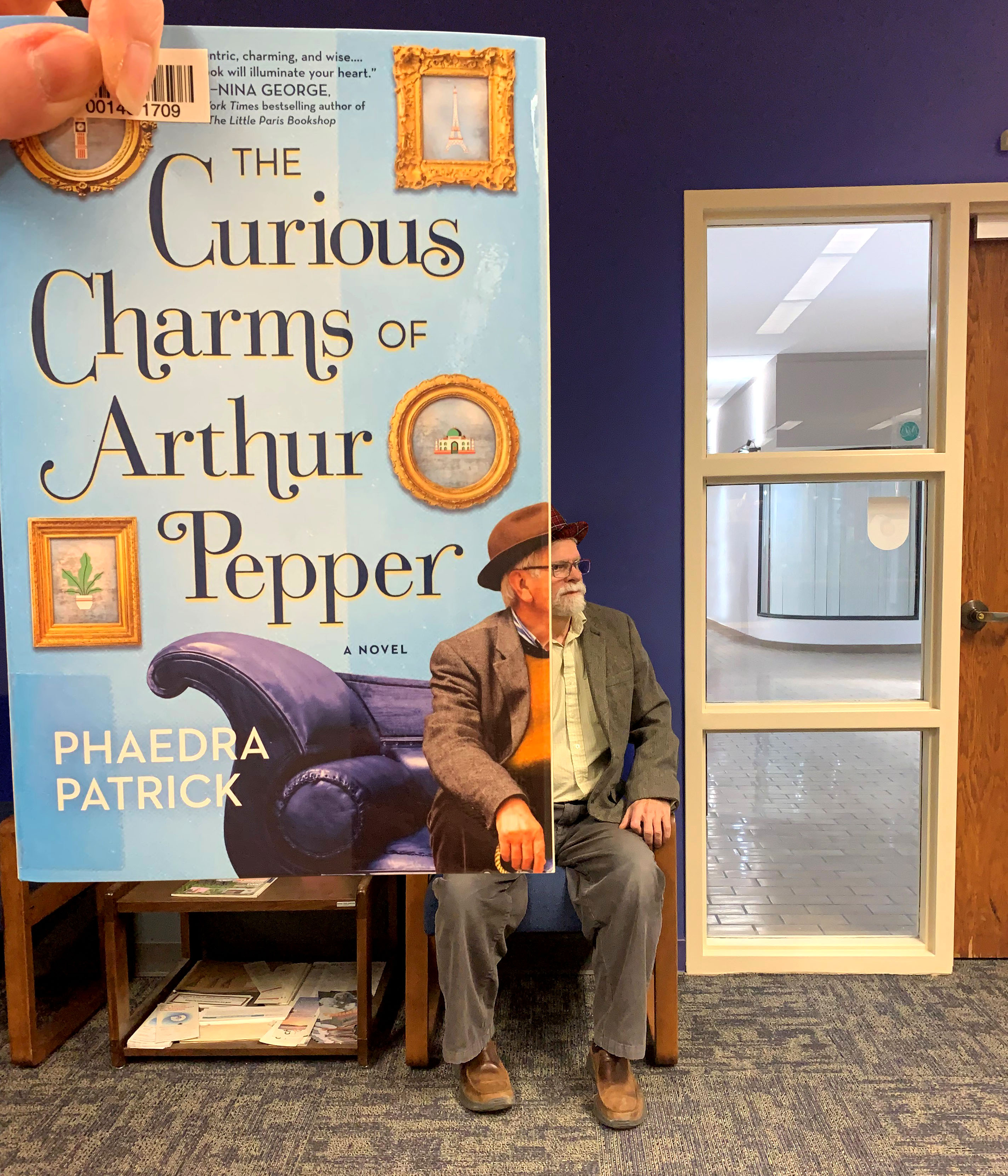
This week’s #BookFace would make a charming book club read! A story about hope, healing, and self-discovery, it has great discussion written all over it. And just your luck, “The Curious Charms of Arthur Pepper” by Phaedra Patrick (MIRA, 2017) is available as an NLC Book Club Kit. Book club kit already checked out? Try one of the many read-alikes we have in our book club collection, or read this title as an ebook through Nebraska OverDrive Libraries. If you’re a fan of “A Man Called Ove” or “The Unlikely Pilgrimage of Harold Fry” this is the read for you. Add it to your to-be-read list today!
“Phaedra Patrick understands the soul. Eccentric, charming, and wise, The Curious Charms of Arthur Pepper is about finding courage, generosity, and compassion, even when all seems lost. With clear-eyed prose and a moving story, Patrick reminds us how selfless people can be she reminds us to be brave. The Curious Charms is not just for those who are mourning over love or the past. This book will illuminate your heart.”
— Nina George, New York Times bestselling author of The Little Paris Bookshop
Book Club Kits Rules for Use
- These kits can be checked out by the librarians of Nebraska libraries and media centers.
- Circulation times are flexible and will be based upon availability. There is no standard check-out time for book club kits.
- Please search the collection to select items you wish to borrow and use the REQUEST THIS KIT icon to borrow items.
- Contact the Information Desk at the Library Commission if you have any questions: by phone: 800/307-2665, or by email: Information Services Team
Find this title and many more through Nebraska OverDrive! Libraries participating in the Nebraska OverDrive Libraries Group currently have access to a shared and growing collection of digital downloadable audiobooks and eBooks. 189 libraries across the state share the Nebraska OverDrive collection of 21,696 audiobooks, 35,200 eBooks, and 3,964 magazines. As an added bonus it includes 130 podcasts that are always available with simultaneous use (SU), as well as SU ebooks and audiobook titles that publishers have made available for a limited time. If you’re a part of it, let your users know about this great title, and if you’re not a member yet, find more information about participating in Nebraska Overdrive Libraries!
Love this #BookFace & reading? Check out our past #BookFaceFriday photos on the Nebraska Library Commission’s Facebook page!
Friday Reads: Toad by Katherine Dunn
I don’t remember how I came to read Katherine Dunn’s cult-classic novel, Geek Love. It is the story of a circus couple and their literally homemade “freak show”; all of their children were purposely subjected to chemicals and drugs in utero in order to produce “show-worthy” birth defects. I was likely still reading The Babysitters Club when it was published in 1989, and while it was being praised by Kurt Cobain and Terry Gilliam, there is little chance it was carried by my small town library. Nonetheless, it eventually popped up on my literary radar and Dunn’s vivid and often grotesque imagery is forever seared into my subconscious. That Tim Burton bought the rights to the book probably says enough.
Geek Love is not the book I’m talking about today. However, without it, I would have probably never given a second glance to Toad.
Toad, published this past fall, 6 years after Dunn’s death, was penned long before she wrote Geek Love. Although she had two previous novels under her belt, this third book was declined by her publisher, and attempts to revise it and shop it around to a new house were unsuccessful. The story is based on Dunn’s experience in 1960s Portland, and having the largely autobiographical work rejected over and over was a blow to Dunn, who eventually shelved the book. She then spent years perfecting her ultimately-acclaimed next project, Geek Love, before submitting it to professional critique. Dunn never did try to find a publisher for Toad again, but after her death, her son Eli was contacted by an editor searching for Dunn’s lesser-known writing and he lent her the manuscript. After she overcame her shock that no one had tried to release the book before her, she helped usher it into print.
Compared to Geek Love, the characters in Toad are almost boringly normal. Sally Dunn, our protagonist, oscillates her narrative between her current life as a near-recluse, alone with her regrets in a small house she pays for with her disability check, and tales of her misspent youth near a college campus in Portland. She tags along after a group of hippie students, with their lofty (often naive) ideals and lack of work ethic, that she seems to simultaneously envy and loathe. She despises them because they come from cushy middle-class backgrounds and choose to live in bohemian squalor, but she despises herself even more for not fitting in, always being the outsider.
There are no heroes in Katherine Dunn’s world – only victims and villains, and they are often one and the same. There is no one to root for, or against, as everyone has the capacity for cruelty, kindness, love, and loss. Sally tells the story, but without the rose-colored glasses through which we often view our good old days. She recognizes that she, too, can be both brutal and benevolent, and that realization is among her reasons for her self-isolation.
At times sad, humorous, honest, and grotesque, Katherine Dunn’s writing is not for everyone. She doesn’t sugarcoat humanity – people can be gross, crass, and annoying. Nonetheless, I’m glad these books crossed my path. Now I need to go wash my hands.
Dunn, Katherine. Toad, New York, New York : Farrar, Straus and Giroux, 2022.
Posted in Books & Reading, General
Tagged 1960s, books, Friday Reads, Geek Love, Katherine Dunn, Portland, Reading, Toad
Leave a comment
What’s Up Doc? 2022 State Agency Publications at the Nebraska Library Commission
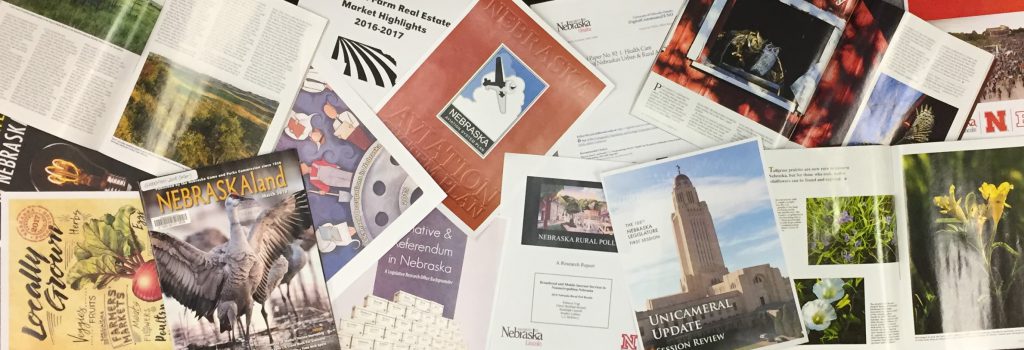
Below are the state agency publications that were received at the Nebraska Library Commission in 2022.
Most items, except the books from the University of Nebraska Press, are available for immediate viewing and printing by clicking on the highlighted link above, or directly in the .pdf below. You can read synopses of the books received from the University of Nebraska Press in the Book Briefs blogposts.
The Nebraska Legislature created the Nebraska Publications Clearinghouse in 1972 as a service of the Nebraska Library Commission. Its purpose is to collect, preserve, and provide access to all public information published by Nebraska state agencies. By law (State Statutes 51-411 to 51-413) all Nebraska state agencies are required to submit their published documents to the Clearinghouse. For more information, visit the Nebraska Publications Clearinghouse page, contact Mary Sauers, Government Information Services Librarian; or contact Bonnie Henzel, State Documents Staff Assistant.
What’s Up Doc? New State Agency Publications at the Nebraska Library Commission

New state agency publications have been received at the Nebraska Library Commission for November and December, 2022. Included are reports from the Nebraska Department of Corrections, the Nebraska Department of Criminal Justice, the Nebraska Legislature, the Nebraska Department of Transportation, and new books from the University of Nebraska Press, to name a few.
Most items, except the books from the University of Nebraska Press, are available for immediate viewing and printing by clicking on the highlighted link above, or directly in the .pdf below. You can read synopses of the books received from the University of Nebraska Press in the Book Briefs blogposts.
The Nebraska Legislature created the Nebraska Publications Clearinghouse in 1972 as a service of the Nebraska Library Commission. Its purpose is to collect, preserve, and provide access to all public information published by Nebraska state agencies. By law (State Statutes 51-411 to 51-413) all Nebraska state agencies are required to submit their published documents to the Clearinghouse. For more information, visit the Nebraska Publications Clearinghouse page, contact Mary Sauers, Government Information Services Librarian; or contact Bonnie Henzel, State Documents Staff Assistant.
Book Briefs: New University of Nebraska Press Books at the Nebraska Publications Clearinghouse
The Nebraska Publications Clearinghouse receives documents every month from all Nebraska state agencies, including the University of Nebraska Press (UNP). Each month we will be showcasing the UNP books that the Clearinghouse has received.
UNP books, as well as all Nebraska state documents, are available for checkout by libraries and librarians for their patrons.
Here are the UNP books the Clearinghouse received in November and December, 2022:
Continental Reckoning : The American West in the Age of Expansion by Elliott West. Series: History of the American West
In Continental Reckoning renowned historian Elliott West presents a sweeping narrative of the American West and its vital role in the transformation of the nation. In the 1840s, by which time the United States had expanded to the Pacific, what would become the West was home to numerous vibrant Native cultures and vague claims by other nations. Thirty years later it was organized into states and territories and bound into the nation and world by an infrastructure of rails, telegraph wires, and roads and by a racial and ethnic order, with its Indigenous peoples largely dispossessed and confined to reservations.
Unprecedented exploration uncovered the West’s extraordinary resources, beginning with the discovery of gold in California within days of the United States acquiring the territory following the Mexican-American War. As those resources were developed, often by the most modern methods and through modern corporate enterprise, half of the contiguous United States was physically transformed. Continental Reckoning guides the reader through the rippling, multiplying changes wrought in the western half of the country, arguing that these changes should be given equal billing with the Civil War in this crucial transition of national life.
As the West was acquired, integrated into the nation, and made over physically and culturally, the United States shifted onto a course of accelerated economic growth, a racial reordering and redefinition of citizenship, engagement with global revolutions of science and technology, and invigorated involvement with the larger world. The creation of the West and the emergence of modern America were intimately related. Neither can be understood without the other. With masterful prose and a critical eye, West presents a fresh approach to the dawn of the American West, one of the most pivotal periods of American history.
Everywhen : Australia and the Language of Deep History by Ann McGrath, Laura Rademaker, and Jakelin Troy. Series: New Visions in Native American and Indigenous Studies
Everywhen is a groundbreaking collection about diverse ways of conceiving, knowing, and narrating time and deep history. Looking beyond the linear documentary past of Western or academic history, this collection asks how knowledge systems of Australia’s Aboriginals and Torres Strait Islanders can broaden our understandings of the past and of historical practice. Indigenous embodied practices for knowing, narrating, and reenacting the past in the present blur the distinctions of linear time, making all history now. Ultimately, questions of time and language are questions of Indigenous sovereignty. The Australian case is especially pertinent because Australian Aboriginal and Torres Strait Islander people are among the few Native peoples without a treaty with their colonizers. Appreciating First Nations’ time concepts embedded in languages and practices, as Everywhen does, is a route to recognizing diverse forms of Indigenous sovereignties.
Everywhen makes three major contributions. The first is a concentration on language, both as a means of knowing and transmitting the past across generations and as a vital, albeit long-overlooked source material for historical investigation, to reveal how many Native people maintained and continue to maintain ancient traditions and identities through language. Everywhen also considers Indigenous practices of history, or knowing the past, that stretch back more than sixty thousand years; these Indigenous epistemologies might indeed challenge those of the academy. Finally, the volume explores ways of conceiving time across disciplinary boundaries and across cultures, revealing how the experience of time itself is mediated by embodied practices and disciplinary norms.
Everywhen brings Indigenous knowledges to bear on the study and meaning of the past and of history itself. It seeks to draw attention to every when, arguing that Native time concepts and practices are vital to understanding Native histories and, further, that they may offer a new framework for history as practiced in the Western academy.
Field Guide to a Hybrid Landscape : Photographs by Dana Fritz Photographs by Dana Fritz; Essays by Katie Anania, Rebecca Buller, and Rose-Marie Muzika; Maps by Salvador Lindquist.
In Field Guide to a Hybrid Landscape Dana Fritz traces the evolution of the Bessey Ranger District and Nursery of the Nebraska National Forest and Grasslands. Fritz’s contemporary photographs of this unique ecosystem, with provocative environmental essays, maps, and historical photographs from the U.S. Forest Service archives, illuminate the complex environmental and natural history of the site, especially as it relates to built environments, land use, and climate change.
The Nebraska National Forest at Halsey, as it is known colloquially, is the largest hand-planted forest in the Western Hemisphere, and formerly in the world. This hybrid landscape of a conifer forest overlaid onto a semiarid grassland just west of the one-hundredth meridian was an ambitious late nineteenth-century idea to create a timber industry, to reclaim a landscape considered disordered and unproductive, and to change the local climate in northcentral Nebraska. While the planners seemed not to appreciate the native grasslands that form the ecosystem of the Nebraska Sandhills, they did recognize the reliable water from the Dismal and Middle Loup Rivers that border the site. In 1902 the first federal nursery was established as part of the Dismal River Forest Reserve to produce seedlings for plains homesteads and the adjacent treeless tract of land. At that time tree planting was not used for carbon sequestration but to mitigate the wind and evaporation of moisture.
The Bessey Nursery now produces replacement seedlings for burned and beetle-damaged forests in the Rocky Mountains and for the Nebraska Conservation Trees Program. This constructed landscape of row-crop trees that were protected from fire for decades, yet never commercially harvested for timber, provides a rich metaphor for current environmental predicaments. The late nineteenth-century effort to reclaim with trees what was called the Great American Desert has evolved to a focus on twenty-first-century conservation, grassland restoration, and reforestation, all of which work to sequester carbon, maintain natural ecosystem balance, and mitigate large-scale climate change. Field Guide to a Hybrid Landscape offers a visual and critical examination of this unique managed landscape, which has implications far beyond its borders.
Franz Boas : Shaping Anthropology and Fostering Social Justice, by Rosemary Lévy Zumwalt. Series: Critical Studies in the History of Anthropology
Franz Boas defined the concept of cultural relativism and reoriented the humanities and social sciences away from race science toward an antiracist and anticolonialist understanding of human biology and culture. Franz Boas: Shaping Anthropology and Fostering Social Justice is the second volume in Rosemary Lévy Zumwalt’s two-part biography of the renowned anthropologist and public intellectual.
Zumwalt takes the reader through the most vital period in the development of Americanist anthropology and Boas’s rise to dominance in the subfields of cultural anthropology, physical anthropology, ethnography, and linguistics. Boas’s emergence as a prominent public intellectual, particularly his opposition to U.S. entry into World War I, reveals his struggle against the forces of nativism, racial hatred, ethnic chauvinism, scientific racism, and uncritical nationalism.
Boas was instrumental in the American cultural renaissance of the 1920s and 1930s, training students and influencing colleagues such as Melville Herskovits, Zora Neale Hurston, Benjamin Botkin, Alan Lomax, Langston Hughes, and others involved in combating racism and the flourishing Harlem Renaissance. He assisted German and European émigré intellectuals fleeing Nazi Germany to relocate in the United States and was instrumental in organizing the denunciation of Nazi racial science and American eugenics. At the end of his career Boas guided a network of former student anthropologists, who spread across the country to university departments, museums, and government agencies, imprinting his social science more broadly in the world of learned knowledge.
Franz Boas is a magisterial biography of Franz Boas and his influence in shaping not only anthropology but also the sciences, humanities, social science, visual and performing arts, and America’s public sphere during a period of great global upheaval and democratic and social struggle.
From Near and Far : A Transitional History of France, by Tyler Stovall. Series: France Overseas: Studies in Empire and Decolonization
From Near and Far relates the history of modern France from the French Revolution to the present. Noted historian Tyler Stovall considers how the history of France interacts with both the broader history of the world and the local histories of French communities, examining the impacts of Karl Marx, Ho Chi Minh, Paul Gauguin, and Josephine Baker alongside the rise of haute couture and the contemporary role of hip hop.
From Near and Far focuses on the interactions between France and three other parts of the world: Europe, the United States, and the French colonial empire. Taking this transnational approach to the history of modern France, Stovall shows how the theme of universalism, so central to modern French culture, has manifested itself in different ways over the last few centuries. Moreover, it emphasizes the importance of narrative to French history, that historians tell the story of a nation and a people by bringing together a multitude of stories and tales that often go well beyond its boundaries. In telling these stories From Near and Far gives the reader a vision of France both global and local at the same time.
Gentry Rhetoric : Literacies, Letters, and Writing in an Elizabethan Community by Danial Ellis. Series: Early Modern Cultural Studies
Gentry Rhetoric examines the full range of influences on the Elizabethan and Jacobean genteel classes’ practice of English rhetoric in daily life. Daniel Ellis surveys how the gentry of late sixteenth- and early seventeenth-century Norfolk wrote to and negotiated with each other by employing Renaissance humanist rhetoric, both to solidify their identity and authority in resisting absolutism and authoritarianism, and to transform the political and social state. The rhetorical training that formed the basis of their formal education was one obvious influence. Yet to focus on this training exclusively allows only a limited understanding of the way this class developed the strategies that enabled them to negotiate, argue, and conciliate with one another to such an extent that they could both form themselves as a coherent entity and become the primary shapers of written English’s style, arrangement, and invention.
Gentry Rhetoric deeply and inductively examines archival materials in which members of the gentry discuss, debate, and negotiate matters relating to their class interests and political aspirations. Humanist rhetoric provided the bedrock of address, argumentation, and negotiation that allowed the gentry to instigate a political and educational revolution in seventeenth- and eighteenth-century England.
Keorapetse Kgositsile : Collected Poems, 1969-2018 by Keorapetse Kgositsile; Edited and with an introduction by Phillippa Yaa de Villiers and Uhuru Portia Phalafala. Series: African Poetry Book
Keorapetse Kgositsile, South Africa’s second poet laureate, was a political activist, teacher, and poet. He lived, wrote, and taught in the United States for a significant part of his life and collaborated with many influential and highly regarded writers, including Gwendolyn Brooks, Sterling Plumpp, Dudley Randall, and George Kent. This comprehensive collection of Kgositsile’s new and collected works spans almost fifty years.
During his lifetime, Kgositsile dedicated the majority of his poems to people or movements, documenting the struggle against racism, Western imperialism, and racial capitalism, and celebrating human creativity, particularly music, as an inherent and essential aspect of the global liberation struggle. This collection demonstrates the commitment to equality, justice, and egalitarianism fostered by cultural workers within the mass liberation movement. As the introduction notes, Kgositsile had an “undisputed ability to honor the truth in all its complexity, with a musicality that draws on the repository of memory and history, rebuilt through the rhythms and cadences of jazz.” Addressing themes of Black solidarity, displacement, and anticolonialism, Kgositsile’s prose is fiery, witty, and filled with conviction. This collection showcases a voice that wanted to change the world—and did.
Restoring Nature : the Evolution of Channel Islands National Park by Lary M. Dilsaver and Timothy J. Babalis. Series: America’s Public Lands
Off the coast of California, running from Santa Barbara to La Jolla, lies an archipelago of eight islands known as the California Channel Islands. The northern five were designated as Channel Islands National Park in 1980 to protect and restore the rich habitat of the islands and surrounding waters.
In the years since, that mission intensified as scientists discovered the extent of damage to the delicate habitats of these small fragments of land and to the surprisingly threatened sea around them. In Restoring Nature Lary M. Dilsaver and Timothy J. Babalis examine how the National Park Service has attempted to reestablish native wildlife and vegetation to the five islands through restorative ecology and public land management. The Channel Islands staff were innovators of the inventory and monitoring program whereby the resource problems were exposed. This program became a blueprint for management throughout the U.S. park system.
Dilsaver and Babalis present an innovative regional and environmental history of a little-known corner of the Pacific West, as well as a larger national narrative about how the Park Service developed its approach to restoration ecology, which became a template for broader Park Service policies that shaped the next generation of environmental conservation.
Sex, Gender, and Illegitimacy in the Castilian Noble Family, 1400-1600 by Grace E. Coolidge. Series: Women and Gender in the Early Modern World
Sex, Gender, and Illegitimacy in the Castilian Noble Family, 1400–1600 looks at illegitimacy across the fifteenth and sixteenth centuries and analyzes its implications for gender and family structure in the Spanish nobility, a class whose actions, structure, and power had immense implications for the future of the country and empire. Grace E. Coolidge demonstrates that women and men were able to challenge traditional honor codes, repair damaged reputations, and manipulate ideals of marriage and sexuality to encompass extramarital sexuality and the nearly constant presence of illegitimate children.
This flexibility and creativity in their sexual lives enabled members of the nobility to repair, strengthen, and maintain their otherwise fragile concept of dynasty and lineage, using illegitimate children and their mothers to successfully project the noble dynasty into the future—even in an age of rampant infant mortality that contributed to the frequent absence of male heirs. While benefiting the nobility as a whole, the presence of illegitimate children could also be disruptive to the inheritance process, and the entire system privileged noblemen and their aims and goals over the lives of women and children.
This book enriches our understanding of the complex households and families of the Spanish nobility, challenging traditional images of a strict patriarchal system by uncovering the hidden lives that made that system function.
Taking the Field : Soldiers, Nature, and Empire on American Frontiers by Amy Kohout. Series: Many Wests
Published in Cooperation with the William P. Clements Center for Southwest Studies, Southern Methodist University.
In the late nineteenth century, at a time when Americans were becoming more removed from nature than ever before, U.S. soldiers were uniquely positioned to understand and construct nature’s ongoing significance for their work and for the nation as a whole. American ideas and debates about nature evolved alongside discussions about the meaning of frontiers, about what kind of empire the United States should have, and about what it meant to be modern or to make “progress.” Soldiers stationed in the field were at the center of these debates, and military action in the expanding empire brought new environments into play.
In Taking the Field Amy Kohout draws on the experiences of U.S. soldiers in both the Indian Wars and the Philippine-American War to explore the interconnected ideas about nature and empire circulating at the time. By tracking the variety of ways American soldiers interacted with the natural world, Kohout argues that soldiers, through their words and their work, shaped Progressive Era ideas about both American and Philippine environments. Studying soldiers on multiple frontiers allows Kohout to inject a transnational perspective into the environmental history of the Progressive Era, and an environmental perspective into the period’s transnational history. Kohout shows us how soldiers—through their writing, their labor, and all that they collected—played a critical role in shaping American ideas about both nature and empire, ideas that persist to the present.
The Camp Fire Girls : Gender, Race, and American Girlhood, 1910–1980 by Jennifer Helgren. Series: Expanding Frontiers: Interdisciplinary Approaches to Studies of Women, Gender, and Sexuality
As the twentieth century dawned, progressive educators established a national organization for adolescent girls to combat what they believed to be a crisis of girls’ education. A corollary to the Boy Scouts of America, founded just a few years earlier, the Camp Fire Girls became America’s first and, for two decades, most popular girls’ organization. Based on Protestant middle-class ideals—a regulatory model that reinforced hygiene, habit formation, hard work, and the idea that women related to the nation through service—the Camp Fire Girls invented new concepts of American girlhood by inviting disabled girls, Black girls, immigrants, and Native Americans to join. Though this often meant a false sense of cultural universality, in the girls’ own hands membership was often profoundly empowering and provided marginalized girls spaces to explore the meaning of their own cultures in relation to changes taking place in twentieth-century America.
Through the lens of the Camp Fire Girls, Jennifer Helgren traces the changing meanings of girls’ citizenship in the cultural context of the twentieth century. Drawing on girls’ scrapbooks, photographs, letters, and oral history interviews, in addition to adult voices in organization publications and speeches, The Camp Fire Girls explores critical intersections of gender, race, class, nation, and disability.
The Complete Letters of Henry James, 1887-1888, Volume 1 by Henry James; Edited by Michael Anesko and Greg W. Zacharias; Katie Sommer, Associate Editor; With an introduction by Sarah Wadsworth. Series: The Complete Letters of Henry James
This first volume in The Complete Letters of Henry James, 1887–1888 contains 154 letters, of which 94 are published for the first time, written from early January to December 22, 1887. These letters mark Henry James’s ongoing efforts to care for his sister, develop his work, strengthen his professional status, build friendships, engage timely political and economic issues, and maximize his income. James details work on “The Aspern Papers,” Partial Portraits, and plans The Reverberator. This volume opens with James in the midst of a long sojourn in Italy and concludes with his inquiring about both the status of his essay to the American Copyright League and also the story “The Liar.”
The Dakota Way of Life by Ella Cara Deloria; Edited by Raymond J. DeMallie and Thierry Veyrié; Afterword by Philip J. Deloria. Series: Studies in the Anthropology of North American Indians
Ella Cara Deloria devoted much of her life to the study of the language and culture of the Sioux (Dakota and Lakota). The Dakota Way of Life is the result of the long history of her ethnographic descriptions of traditional Dakota culture and social life. Deloria was the most prolific Native scholar of the greater Sioux Nation, and the results of her work comprise an essential source for the study of the greater Sioux Nation culture and language. For years she collected material for a study that would document the variations from group to group. Tragically, her manuscript was not published during her lifetime, and at the end of her life all of her major works remained unpublished.
Deloria was a perfectionist who worked slowly and cautiously, attempting to be as objective as possible and revising multiple times. As a result, her work is invaluable. Her detailed cultural descriptions were intended less for purposes of cultural preservation than for practical application. Deloria was a scholar through and through, and yet she never let her dedication to scholarship overwhelm her sense of responsibility as a Dakota woman, with family concerns taking precedence over work. Her constant goal was to be an interpreter of an American Indian reality to others. Her studies of the Sioux are a monument to her talent and industry.
The Imperial Gridiron : Manhood, Civilization, and Football at the Carlisle Indian Industrial School by Matthew Bentley and John Bloom.
The Imperial Gridiron examines the competing versions of manhood at the Carlisle Indian Industrial School between 1879 and 1918. Students often arrived at Carlisle already engrained with Indigenous ideals of masculinity. On many occasions these ideals would come into conflict with the models of manhood created by the school’s original superintendent, Richard Henry Pratt. Pratt believed that Native Americans required the “embrace of civilization,” and he emphasized the qualities of self-control, Christian ethics, and retaliatory masculinity. He encouraged sportsmanship and fair play over victory.
Pratt’s successors, however, adopted a different approach, and victory was enshrined as the main objective of Carlisle sports. As major stars like Jim Thorpe and Lewis Tewanima came to the fore, this change in approach created a conflict over manhood within the school: should the competitive athletic model be promoted, or should Carlisle focus on the more self-controlled, Christian ideal as promoted by the school’s Young Men’s Christian Association? The answer came from the 1914 congressional investigation of Carlisle. After this grueling investigation, Carlisle’s model of manhood starkly reverted to the form of the Pratt years, and by the time the school closed in 1918, the school’s standards of masculinity had come full circle.
**Pictures and Synopses courtesy of University of Nebraska Press.
Friday Reads: Battle Dragons: City of Thieves
If you’re looking for a fun, fast moving, unique story about dragons and secrets set in a modern dystopia, the Battle Dragons series by Alex London is for you. City of Thieves is the first book in the series. The second book, City of Speed, came out last August and the third, City of Secrets, will be released in March of this year.
Centuries ago, humans domesticated dragons and now they work in the modern city of Drakopolis: performing jobs such as burning garbage, running the taxi service, and serving as bus drivers. And of course, they are used for battle. The gangs that run the different areas of the city, called kins, compete with each other over territory, loyalty, and resources in dramatic, illegal dragon battles.
The main character, Abel, is a teen boy who is struggling to figure out what he will do with his life, since he failed his Dragon Rider Academy Entrance Exam. His brother and sister both passed their tests, although they took different paths after. His brother Silas is a dragon rider cadet, part of the city’s police force. His sister Lina however, choose not to become a dragon rider and instead works at Chimera’s All-Night Coffee and Comics shop. And maybe is involved in something else, as Abel starts to discover one night when she entrusts him with a secret hidden in a comic that she gives him.
That same night, enforcers from the Red Talon kin, the gang that controls the part of the city where Abel and his family lives, come banging on their apartment door, looking for Lina. But, why? Abel must figure out what the secret is that Lina asked him to keep.
With the help of his best friend, Roa, Abel tracks down his sister’s secret – a stolen dragon! The dragon bonds with Abel and that’s when the story really starts, as they are thrown into the world of the kin gangs, deal with the conflict between Abel’s siblings, and learn more than they expected about their city, its dragons, and themselves.
A nice touch to the physical copy of this book – the endpapers are embossed to look and feel like purple dragon scaled skin. I have only read the first book so far, but I am definitely looking forward to continuing with the other books in this series.
#BookFaceFriday “The Wild Inside” by Jamey Bradbury
This #BookFace is taking a walk on the wild side!
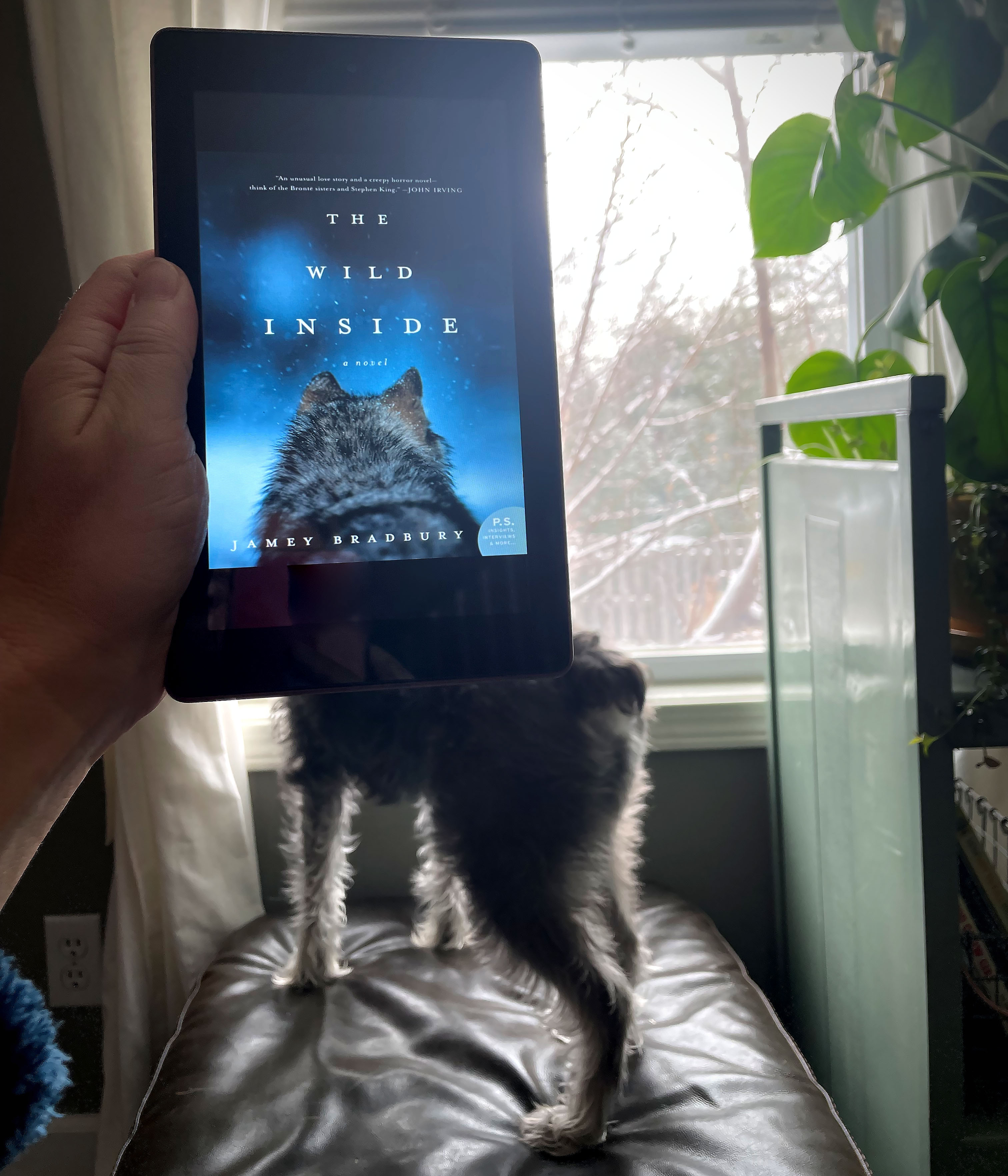
We’re howling at the moon with this week’s #BookFaceFriday. Whether you’re ticking off boxes in a new reading challenge or just looking for your next read, you can find it all on Nebraska OverDrive Libraries. Just like this read that ticks the horror, adventure, and love story boxes, “The Wild Inside: A Novel” by Jamey Bradbury (William Morrow, 2018), it’s available as an ebook and an audiobook today. If you’re trying to read a certain number of books this year, the library is the easiest, most economical, way to make that happen. Even better, you can check out ebooks and audiobooks from Nebraska OverDrive Libraries from anywhere.
“A taut, atmospheric thriller…Jamey Bradbury has crafted a stunning debut full of secrets and hunger, grief and longing. Like the cold of an Alaskan winter, this book chilled me and wrapped me in quiet dread.”
— Jennifer McMahon
Find this title and many more through Nebraska OverDrive. Libraries participating in the Nebraska OverDrive Libraries Group currently have access to a shared and growing collection of digital downloadable audiobooks and eBooks. 189 libraries across the state share the Nebraska OverDrive collection of 26,554 audiobooks, 32,935 eBooks, and 3,940 magazines. As an added bonus it includes 130 podcasts that are always available with simultaneous use (SU), as well as SU ebooks and audiobook titles that publishers have made available for a limited time. If you’re a part of it, let your users know about this great title, and if you’re not a member yet, find more information about participating in Nebraska Overdrive Libraries!
Love this #BookFace & reading? Check out our past #BookFaceFriday photos on the Nebraska Library Commission’s Facebook page!

Posted in Books & Reading
Tagged bookfacefriday, Ebook, Jamey Bradbuty, Nebraska OverDrive Libraries, OverDrive, Reading, The Wild Inside
Leave a comment
What’s Sally Reading?
Meg Medina has been named the 2023-2024 National Ambassador For Young People’s Literature by the Library of Congress. As it says on the website, “The National Ambassador for Young People’s Literature raises national awareness of the importance of young people’s literature as it relates to lifelong literacy, education and the development and betterment of the lives of young people.”
She is the eighth individual to hold this position. Former Ambassadors are:
Jason Reynolds, 2020-2022
Jacqueline Woodson, 2018-2019
Gene Luen Yang, 2016-2017
Kate DiCamillo, 2014-2015
Walter Dean Myers, 2012-2013
Katherine Paterson, 2010-2011
Jon Scieszka, 2008-2009
I have read several of Medina’s books, including Evelyn Del Rey Is Moving Away. In this picture book, on the morning of the move, Daniela and Evelyn play among the moving boxes until they must say goodbye. They are número uno to each other and their friendship will never be forgotten.
Posted in Books & Reading, Youth Services
Leave a comment
Book Club Spotlight – Prairie Lotus
In today’s spotlight, we will continue our look back to the historic American frontier and the people who shaped it. If you, like me, grew up in the early 2000s, chances are you’ve read a book by Linda Sue Park. Her Newberry Award Winning novel, A Single Shard, and Project Mulberry, were some of my absolute favorite books in middle school, and I was over the moon to learn that she is still writing! Our book today, Prairie Lotus, is a new addition to our collection and is the most recent in Linda Sue Park’s bibliography. Being a 2021-22 Golden Sower Novel Nominee, Prairie Lotus has also earned a Children’s Literature Award Honor from the Asian/Pacific American Librarians Association. In addition to being an esteemed author, Park is the founder and curator of Allida Books (a HarperCollins imprint) and a board member for the non-profit We Need Diverse Books and the Rabbit hOle museum project.
At the beginning of Prairie Lotus, Hanna has three goals, graduate from school, become a dressmaker, and make a real friend. As pioneers, she and her father have been traveling across the west for quite some time when they end up in the small Dakota Territory town of LaForge. Hanna is especially excited to live in town so she can finally attend a real school, just like her late mother dreamed of her doing. But, unfortunately, this isn’t as easy as it sounds. Despite being intelligent and resourceful, Hanna is half-Chinese and faces a lot of discrimination from the white settlers who try to stop her from going to school or even running errands. Refusing to give in to their hate, Hanna now has to figure out how to still graduate from school, prepare for the opening of her father’s store, and keep up with her household chores, all the while dealing with the cruelty from the townsfolk. And she has the strong spirit of the American frontier and the strength of her mother in her corner.
“There were always a hundred reasons for disliking people and not nearly as many for liking them.”
Linda Sue Park
Like The Birchbark House, Prairie Lotus is perfect for young (or adult) readers interested in reading about early American history from a fresh perspective. Exploring life in this pioneer community, we are shown the strength and daily life of the women who settled in the West, and the life of the local Indigenous women, specifically from the Ihanktonwan (Yankton Sioux) tribe. The story purposefully reads similarly to Little House on the Prairie and is heavily influenced by the series (you’ll even see some familiar faces). As a daughter of Korean immigrants, Park says, “Hanna’s story is in many respects a kind of ‘conversation’ with the iconic Little House books written by Laura Ingalls Wilder. As a child, I spent hours imagining that I too lived on the frontier in the 1800s, and that I was Laura’s best friend”. And Park makes no mistake that she wrote the story as a way for her to come to terms with a story she loves while also challenging its more problematic history, which is discussed more in the Author’s Note at the end of the book.
More by Linda Sue Park:
If you’re interested in requesting this book for your book club, you can find the Book Club Kit Request Form here. There are 10 copies available (Items must be requested by a librarian)
Park, Linda Sue. Prairie Lotus. Harper Collins. 2020
Friday Reads: Four for the Road by K. J. Reilly
Asher (17) lost his mother a year ago in a car accident. The semi driver was drunk and ran her off the road. He did not receive the punishment Asher thinks he deserved, due to a technicality.
Over the course of the book certain facts and Asher’s plans are revealed to the reader. Asher has started group therapy, in 2 different groups, since he has made no progress in accepting his loss. He befriends an older gentleman, Henry, from his first group, and then he befriends Sloane and Will, close to his own age, from the second.
All three agree to travel with him from New Jersey to Memphis, so he can take his long-distance girlfriend to the prom. That’s what he tells them but he really is planning to kill the man who killed his mother.
Believe it or not, this is an upbeat book, with the final plan lurking in the distance. They accept and bond with each other as they travel. There are jokes, laughing, supporting each other when needed.
They have fun. Ultimately, what will Asher do?
This book was on my mind for several days after I finished reading it. Something about how the characters interact and how they express themselves made it hard to forget.
Reilly, K. J. Four for the Road. Atheneum, 2022.
Dollar General Literacy Foundation Grants Application Cycle is Open
For more grants like this one, check out the NLC’s Grant Opportunities for Nebraska Libraries.
The Dollar General Literacy Foundation is currently accepting grant applications for programs aimed at enhancing Adult, Family, and Summer Reading Literacy programs. The Foundation will also accept applications for its Youth Literacy grant program starting on March 9, 2023.The application deadline for Adult, Family, and Summer Reading Literacy Grant applications is February 16, 2023. Interested applicants may find eligibility information and apply by visiting the Dollar General Literacy Foundation Grant Programs website.
To be eligible for a grant from the Dollar General Literacy Foundation, your organization must be a nonprofit organization as determined by the IRS, a public library, school or college providing direct literacy services within a state that Dollar General Corporation operates in and is within 15 miles of a Dollar General store. Other eligibility requirements are specific to each grant type and can be found within the grants themselves.
For the Adult and Family literacy grant programs, the maximum grant amount is up to $10,000. The Summer Reading maximum is $3,000 and the Youth Literacy grant is $4,000. Applying for a grant does not guarantee that amount due to the large volume of requests we receive.
Adult Literacy Grants (Grant Application deadline: February 16, 2023)
Funding is awarded to organizations that provide direct services to adults in need of literacy assistance in one of the following areas:
- Adult basic education
- GED or high school equivalency preparation
- English language acquisition
Family Literacy Grants (Grant Application deadline: February 16, 2023)
Funding is awarded to nonprofit organizations who support the whole family in literacy, providing:
- Adult education instruction
- Children’s education
- Parent and Child Together Time (PACT)
Summer Reading Grants (Grant Application deadline: February 16, 2023)
Local nonprofit organizations, schools, and libraries can receive funding to support the creation or expansion of summer reading programs that meet the following criteria:
- Target pre-K to 12th grade students who are new readers
- Target below grade level readers
- Assist readers with learning disabilities
Youth Literacy Grants (Grant Applications will be available on March 9, 2023. Application deadline: April 27, 2023)
Schools, public libraries, and nonprofit organizations who help students that are below grade level or having trouble reading may apply with funding provided to assist in the following areas:
- Implementing new or expanding existing literacy programs
- Purchasing new technology or equipment to support literacy initiatives
- Purchasing books, materials or software for literacy programs
Posted in Books & Reading, Grants, Programming, Youth Services
Leave a comment
2023 Will Eisner Graphic Novel Grants for Libraries
For more grants like this one, check out the NLC’s Grant Opportunities for Nebraska Libraries.
The Graphic Novels & Comics Round Table (GNCRT) of ALA and the Will and Ann Eisner Family Foundation are pleased to accept applications for the 2023 Will Eisner Graphic Novel Grants for Libraries.The application deadline is Sunday February 12, 2023.
Through these grants the GNCRT and the Will and Ann Eisner Family Foundation seek to continue to encourage public awareness about the rise and importance of graphic literature and to honor the legacy and creative excellence of Will Eisner. For a career that spanned nearly eight decades — from the dawn of the comic book to the advent of digital comics — Will Eisner is recognized as the “Champion of the Graphic Novel.”
The objective of the Will Eisner Graphic Novel Grants for Libraries is to facilitate library-generated programs and services that will promote graphic novels to library patrons and to the local community. Three Will Eisner Graphic Novel Grants for Libraries are given annually – two Will Eisner Graphic Novel Growth Grants will provide support to two libraries that would like to expand its existing graphic novel services and programs; one Will Eisner Graphic Novel Innovation Grant will provide support to a library for the initiation of a graphic novel service, program or initiative.
The applying librarian or their institution must be an ALA Member to be eligible and the grants are open to libraries across North America, including Canada and Mexico.
The application and information about the Will Eisner Graphic Novel Grants for Libraries can be found on the Graphic Novels and Comics Round Table Eisner Grants page. Interested applicants will find resources and examples on the Eisner Grants FAQ page to help guide them through the process of writing their grant applications. For any inquiries, please contact ALA Graphic Novels & Comics in Libraries Round Table staff liaison Tina Coleman at ccoleman@ala.org.
Will Eisner (1917-2005) was an acclaimed American comics writer, artist, teacher, and entrepreneur. He is considered one of the most important contributors to the development of sequential art (a term he coined) and is known for the cartooning studio he founded; for his highly influential comic series, The Spirit; for his use of comics as an instructional medium; for his leading role in establishing the graphic novel as a form of literature with his 1978 groundbreaking graphic novel, A Contract with God and Other Tenement Stories; for his 20 years of teaching at the School of Visual Arts, leading to his three textbooks. In a career that spanned nearly seven decades—from the dawn of the comic book to the advent of digital comics—Will Eisner was truly the “Father of the Graphic Novel.”
Each winning library will receive a grant award of $4,000 to support initiatives that align with the objective of the Will Eisner Graphic Novel Grants for Libraries. The grant award will consist of the following:
- $2,000 grant to purchase graphic novels from the distributor-partner (current partner is Diamond Comics Distributors),
- $1,000 grant to host a graphic novel-themed event at a library or another community location, and
- $1,000 grant to attend the ALA Annual Conference to receive their grant money. This grant can be used towards any of the following: conference registration, transportation, lodging and food.
In addition, from the book publishers and the Eisner Foundation, the winning libraries will also receive the following graphic novels, valued at approximately $3,000:
- The Will Eisner Library: A graphic novel collection of Will Eisner’s work and biographies about Will Eisner* (comprising approximately 75 books)
- A selection of the winning titles from the current year’s Will Eisner Awards* at Comic-Con International (comprising approximately 100 books).
* Please note that some of the titles in these collections are of a mature nature.
Chosen Grant applicants must agree to take responsibility for organizing a recognition ceremony of their grant in their library.
Posted in Books & Reading, Grants, Programming
Leave a comment
